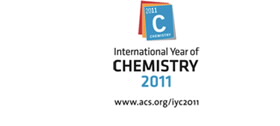EMBARGOED FOR RELEASE | March 29, 2011
Imaging the paintings the paintings of the Old Masters
Note to journalists: Please report that this research was presented at a meeting of the American Chemical Society
ANAHEIM, March 29, 2011 — Gaze upon Rembrandt’s The Night Watch, The Storm on the Sea of Galilee, or one of the great Dutch master’s famous self-portraits. Contemplate Caravaggio’s Boy with a Basket of Fruit, Supper at Emmaus, or the famed Italian artist’s Seven Works of Mercy. Admire Peter Paul Rubens’ Prometheus Bound, Portrait of Władysław IV, or the Flemish baroque painter’s The Exchange of Princesses.
Speaking at the 241st National meeting & Exposition of the American Chemical Society, an international team of scientists today described use of a new technique to see the paintings under the paintings of Rembrandt, Caravaggio, Rubens, and other 17th Century Old Master painters. The report by scientists in Belgium, The Netherlands and the United States was among almost two dozen studies presented as part of a symposium on chemistry and art titled “Partnerships and New Analytical Methodologies at the Interface of Chemistry and Art.”
“The underpainting was the first and most important step in creating a work of art,” explained lead scientist Matthias Alfeld, who is with the University of Antwerp in Belgium. “It was the sketch that guided the artist through the creative process. The Old Masters generally used to roughly indicate light, shade and contours. Observation of the underpainting would allow us to see the first execution of the artist’s vision of the painting. It’s a more detailed look over the shoulder of the artist at work. But the underpainting has virtually escaped all imaging efforts. So far, our methods to visualize the underpainting, except in localized cross sections, have been very limited.”
Alfeld and colleagues described use of a powerful new technique called scanning macro X-ray fluorescence analysis that allows more detailed imaging of the composition of underpaintings. It is portable enough for use on-the-scene in museums and does not harm priceless artwork. The technology already has provided new insights into the nature of the paint that some Old Masters used in their underpainting.
An analysis of paintings from the workshops of Rembrandt and Caravaggio, for instance, led them to the conclusion that the Old Masters were more frugal than fussy about the paint used for the underpainting. The analysis suggested that this brown pigment mixture in underpaintings actually consisted of recycled leftovers from the artist scraping his palette clean.
“Using the new technique, we hope to disperse doubts about the authenticity of several paintings or to confirm that these paintings were not by the painter they have been attributed to,” Alfeld said. ”It is nice to show that the world of art can intersect with chemistry. Chemistry is such an all-encompassing science. Imagine, chemistry isn’t just about molecules and reactions, but it also involves also the study of something as beautiful as great works of art.”
Among the reports scheduled for the symposium are:
Lisa Gulian, Ph.D., of University of California-Santa Barbara, reports methods to optimize REMPI laser mass spectrometry as a new analytical tool to archaeology using theobromine and caffeine as molecular markers in Mesoamerican pottery and is expanding this approach to the field of art to examine laccaic acid in shellacs. REMPI laser mass spectrometry is a combination of resonance enhanced multi photon ionization spectroscopy and time of flight mass spectrometry.
Jennifer Mass, Ph.D., Winterthur, Conservation Department, Winterthur, Del., examined Matisse's iconic and controversial work, Le Bonheur de vivre (The Joy of Life, 1905-1906, The Barnes Foundation) to identify the origin of the fading, discoloration, and flaking of the yellow paints. An XRF map of the work demonstrated that the painting was executed with both chrome yellow (PbCrO4) and cadmium yellow (CdS) pigments, but that the discoloration and flaking are confined to the regions painted with cadmium yellow. Microsamples of the cadmium yellow paints were examined by XANES, XPS, FTIR, and Raman spectroscopies to identify evidence of photo-oxidative degradation.
R. Graham Cooks, Ph.D., of Purdue University, West Lafayette, Ind., presents a study on the ethos of the group — whether in science or in art — deeply engaged in a mixed communal and individual activity that involves physical materials as well as conceptual developments. It deals with matter and spirit, sharing and competing, bursts of self-doubt and creativity. A group of 1848-inspired artists from 19th Century England (Holman Hunt, D. G. Rossetti and John Millais) is introduced, their work is described and comparisons are made with the 1968-inspired generation of mass spectroscopists whose trials and triumphs helped launch one of the great subjects in science.
Nicholas P Bigelow, Ph.D., University of Rochester, Rochester, N.Y., describes the recently launched SCIART-NSF project. The goal is to apply the 21st Century's most advanced nanotechnology and chemical/material science research techniques to the 19th Century's serendipitous nanotechnology, the
daguerreotype. Recently observations have revealed that there is alarming deterioration occurring with daguerreotypes, which is addressed . Also described is the application of high-resolution microscopy and other nano-material science techniques to understanding of the fundamental character of the daguerreotype and its degradation.
###
Media Contact
During the meeting, March 27-31, the contacts can be reached at:
714-765-2012
Michael Bernstein
202-872-6042
m_bernstein@acs.org
Michael Woods
202-872-6293
m_woods@acs.org


